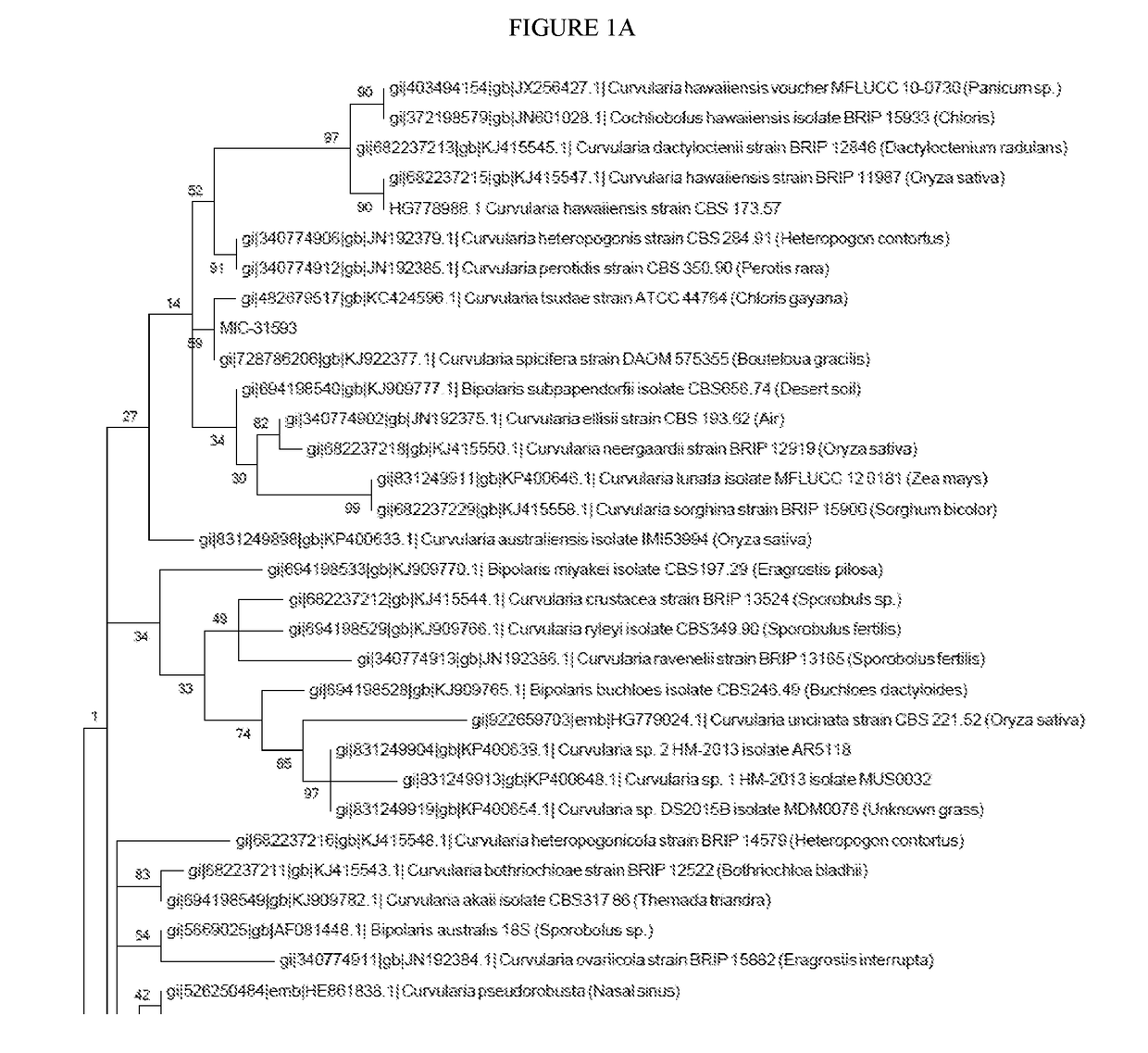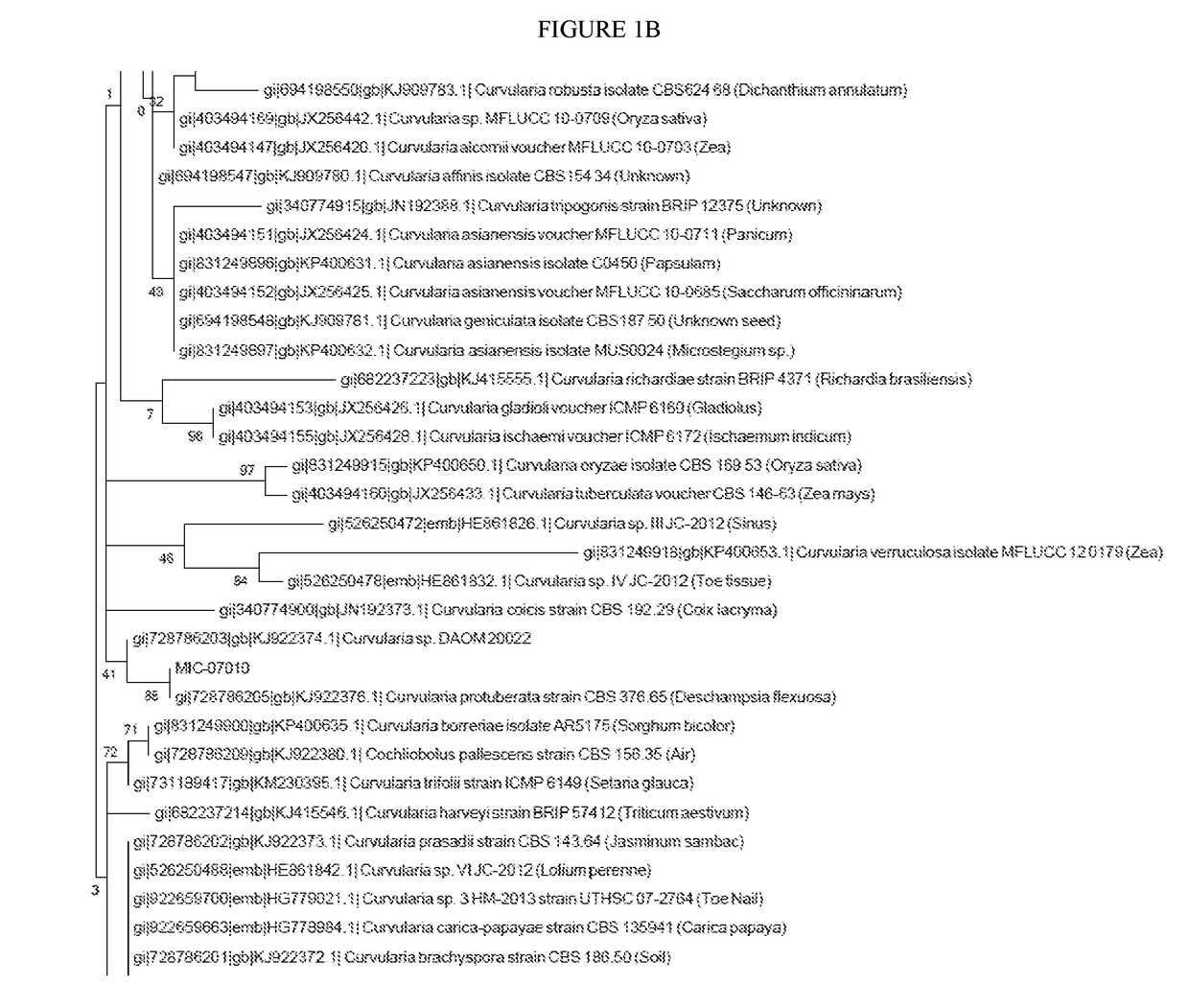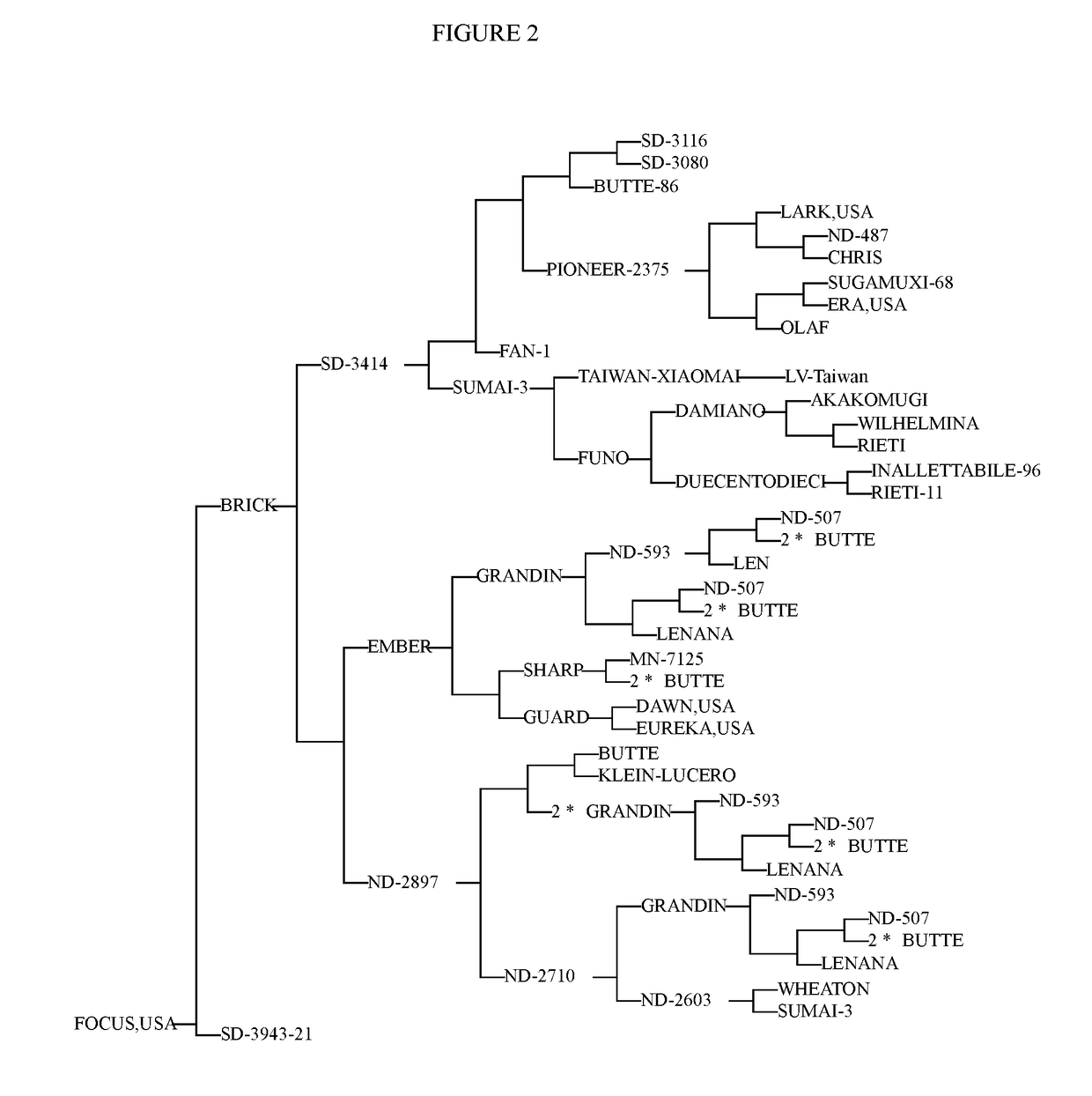Modulated nutritional quality traits in seeds
a technology of nutritional quality and seeds, applied in the field of traits modulation, can solve the problems of largely unsuccessful efforts to modulate compositions, such as fats or proteins, in the seeds of crop plants, and the lack of acceptance of many gm traits, so as to increase the fat composition, and increase the fat composition
- Summary
- Abstract
- Description
- Claims
- Application Information
AI Technical Summary
Benefits of technology
Problems solved by technology
Method used
Image
Examples
example 1
and Identification of Endophytes
[0315]Isolation and cultivation of endophytic microbes from agricultural plants was performed using methods well known in the art. MIC—was isolated from the [tissue] of [Genus species variety]. DNA was extracted from the ground tissues using the DNeasy DNA extraction kit (Qiagen, Hilden, Germany) according to the manufacturer's instructions. The endophytes were characterized by the sequences of genomic regions, these sequences include SEQ ID NOs: 18-62. Primers that amplify genomic regions of the endophytes of the present invention are listed in Table 3. Additional isolation and cultivation of endophytic microbes from agricultural plants was performed using methods well known in the art.
TABLE 3Primer sequences useful in identifying microbes of the present inventionGenomicPrimerslocus27f (5′-AGAGTTTGATYMTGGCTCAG-3′) (SEQ ID NO: 1)16S1492r (5′-GGTTACCTTGTTACGACTT-3′) (SEQ ID NO: 2)515f (5′-GTGYCAGCMGCCGCGGTAA-3′) (SEQ ID NO: 3)16S806r (5′-GGACTACNVGGGTW...
example 2
ation of Endophytes Using Marker Gene Sequences
[0319]The fungal endophytes of the present invention can be identified by the sequence of one or more of the following loci: second largest subunit of RNA polymerase II (RPB2), beta-tubulin. PCR amplification of second largest subunit of RNA polymerase II (RPB2) using primer sequences fRPB2-5F (SEQ ID NO: 13) and bRPB2-7.1R (SEQ ID NO: 11) is described in Riess K, Oberwinkler F, Bauer R, Garnica S. High genetic diversity at the regional scale and possible speciation in Sebacina epigaea and S. incrustans. BMC Evolutionary Biology. 2013; 13:102. doi:10.1186 / 1471-2148-13-102. PCR amplification of second largest subunit of RNA polymerase II (RPB2) using primer sequences fRPB2-5F (SEQ ID NO: 13) and fRPB2-7R (SEQ ID NO: 12) is described in Liu Y, Whelen S, Hall B. Phylogenetic relationships among ascomycetes: evidence from an RNA polymerase II subunit. Mol. Biol. Evol. 1999. 16(12): 1799-1808. PCR amplification of beta-tubulin using primer s...
example 3
ation of Bacterial and Fungal Endophytes Using 16S and ITS Sequences
Classification of the Bacterial Strains Using 16S Sequence
[0322]To accurately characterize isolated bacterial endophytes, colonies were submitted for marker gene sequencing, and the sequences were analyzed to provide taxonomic classifications. Colonies were subjected to 16S rRNA gene PCR amplification using a primer pair 27f (5′-AGAGTTTGATYMTGGCTCAG-3′) (SEQ ID NO: 1) and 1492r (5′-GGTTACCTTGTTACGACTT-3′) (SEQ ID NO: 2). Sequencing reactions were performed using primers: 27f (5′-AGAGTTTGATYMTGGCTCAG-3′) (SEQ ID NO: 1), 515f (5′-GTGYCAGCMGCCGCGGTAA-3′) (SEQ ID NO: 3), 806r (5′-GGACTACNVGGGTWTCTAAT-3′) (SEQ ID NO: 4), and 1492r (5′-GGTTACCTTGTTACGACTT-3′) (SEQ ID NO: 2). Preferably sequencing primers are chosen so that overlapping regions are sequenced. Sanger sequencing of was performed at Genewiz (South Plainfield, N.J.). Raw chromatograms were converted to sequences, and corresponding quality scores were assigned u...
PUM
 Login to View More
Login to View More Abstract
Description
Claims
Application Information
 Login to View More
Login to View More - R&D
- Intellectual Property
- Life Sciences
- Materials
- Tech Scout
- Unparalleled Data Quality
- Higher Quality Content
- 60% Fewer Hallucinations
Browse by: Latest US Patents, China's latest patents, Technical Efficacy Thesaurus, Application Domain, Technology Topic, Popular Technical Reports.
© 2025 PatSnap. All rights reserved.Legal|Privacy policy|Modern Slavery Act Transparency Statement|Sitemap|About US| Contact US: help@patsnap.com



